Bloodroot is blooming in Morris Park. Over the next few weeks look for the fresh white flowers on warm, sunny afternoons on some of the well-drained south and west facing hillsides, especially near the park entrance at Morris Park Road, a bit up the trails. If you show up at our door and we are home we will gladly show you the blooming patches!
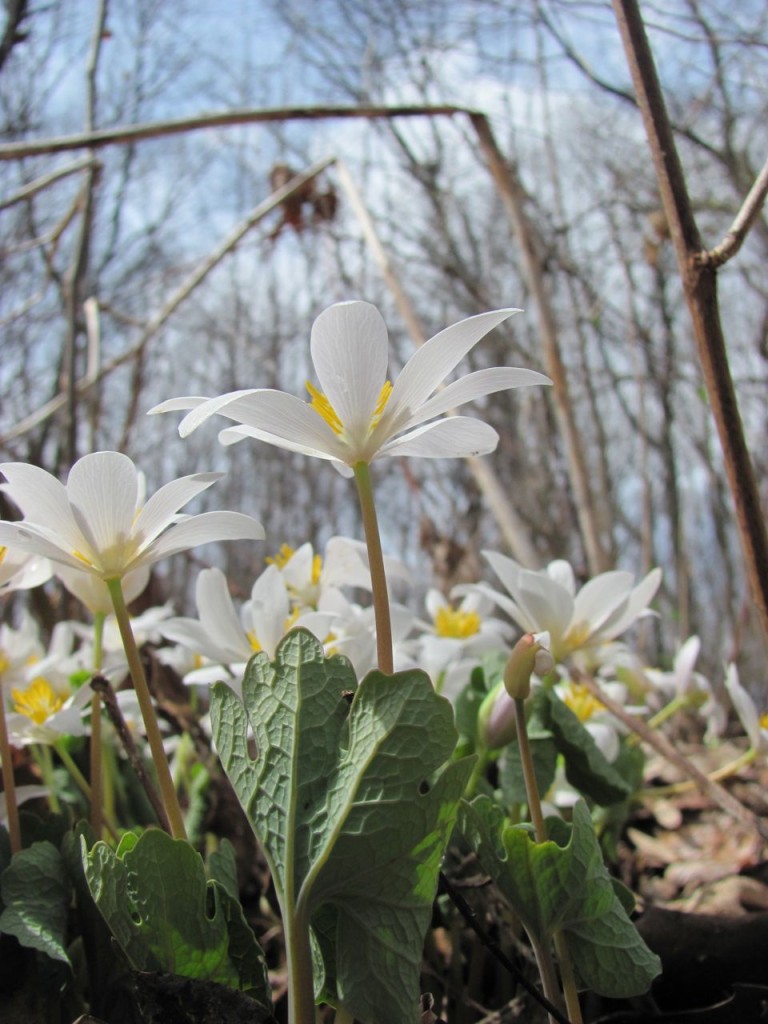
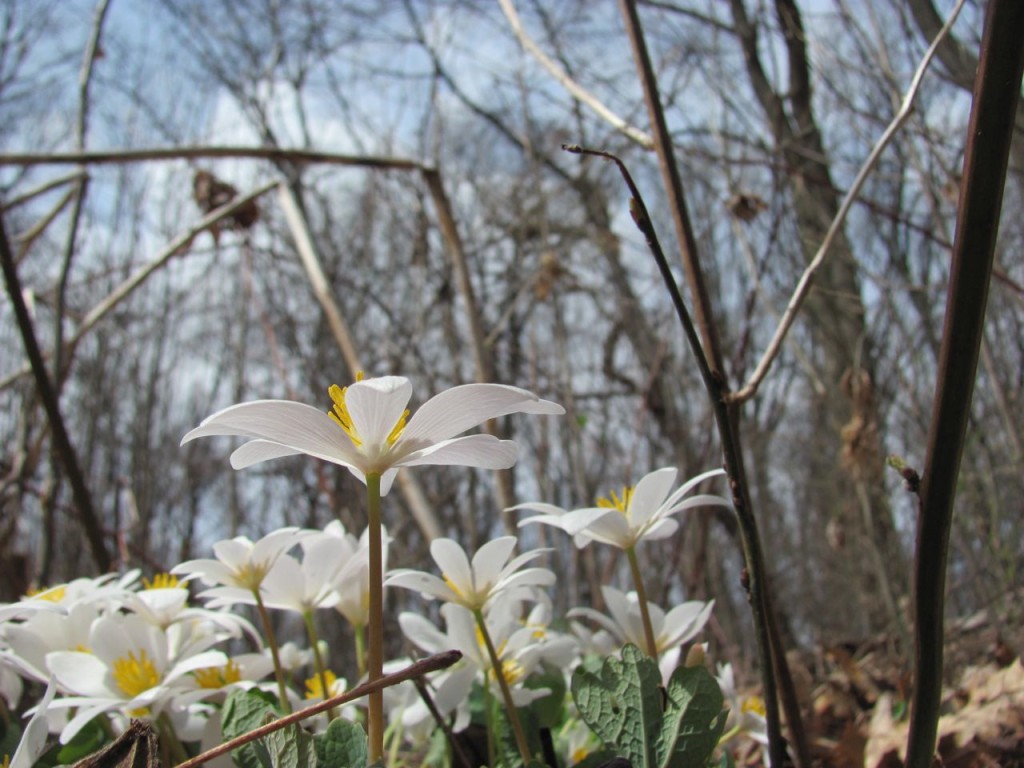
If you see us walking slowly along the paths, staring at the ground, we have not lost our marbles, we are actually looking to see the Bloodroot flowers, which can sometimes escape the eyes of the unaware.
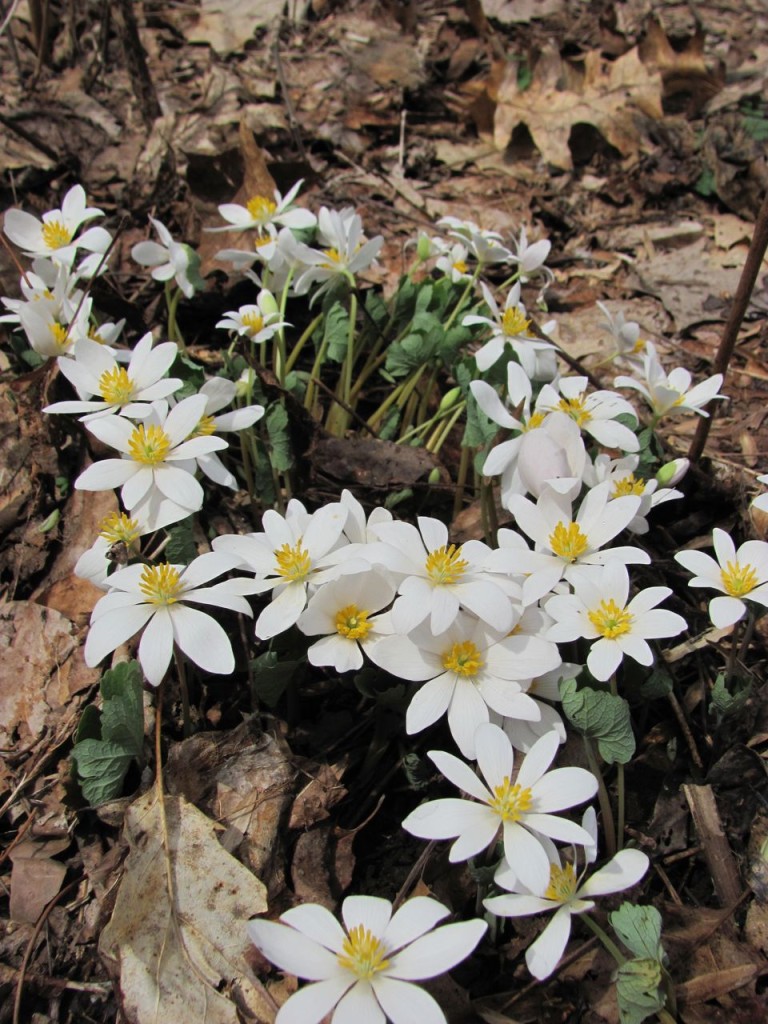
This is a patch that used to be covered in Japanese honeysuckle and would only bloom a few flowers. Now that the invasive vine has been removed, this population has increased ten-fold in size.
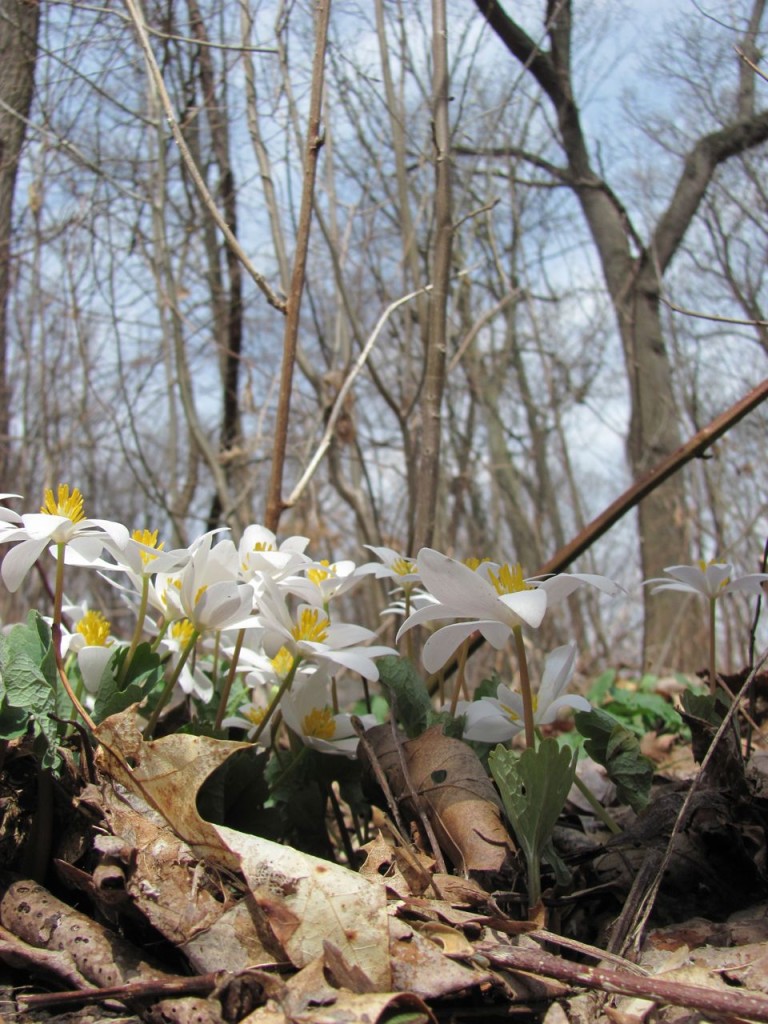
It is very satisfying to see the direct results of the success of this beautiful native spring wildflower from the action we took to remove the invasive exotic vines, in just a few years time! Now there is much more pollen for the species-specific dependent pollinating insects on this early Spring day.
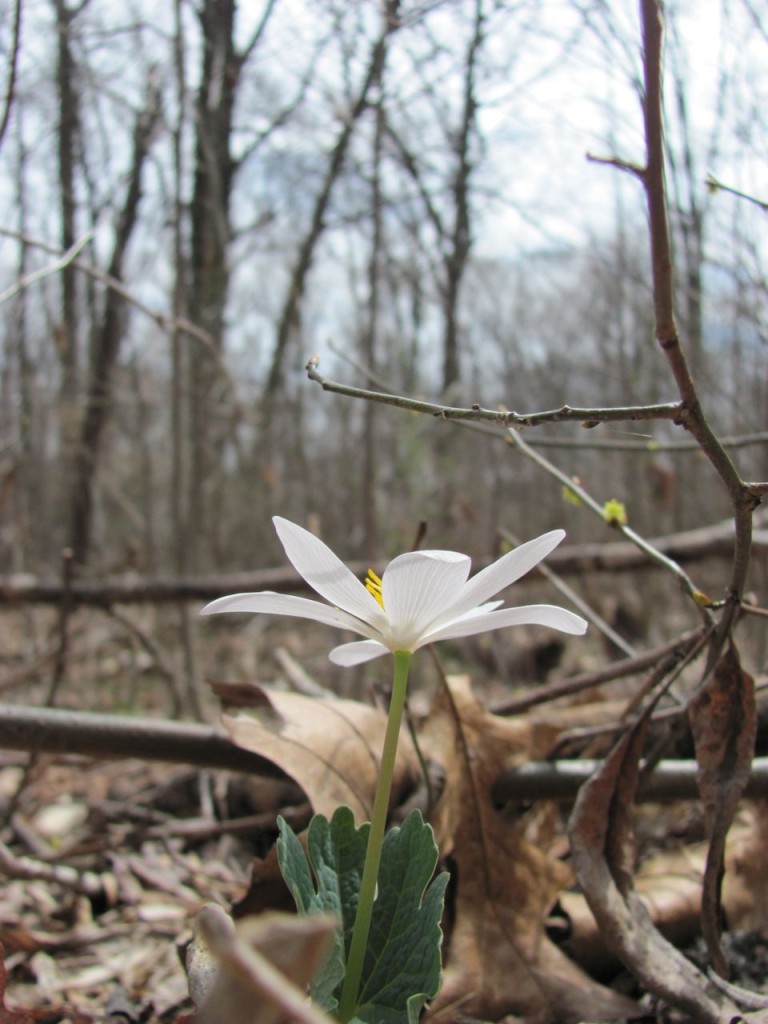
The picture above is special and momentous. This specific flower is also attributed to our efforts. It is growing in a spot that was once nothing but invasive vegetation: The Pennsylvania state listed noxious weed Multiflora-Rose, covered in a thick matte of Japanese Honeysuckle, with a thick shrub layer of the invasive Burning Bush and a tree canopy of Tree-of Heaven, another invasive introduced from China as well as the Norway Maple. Â All of these species were removed from the site. A few seeds from a nearby population (300 feet away) of Bloodroot were collected and tossed on the site 5 years ago during the invasive to native transition. It has established itself and now this flowering plant is an herbaceous layer testament to the success of this re-forestation project!
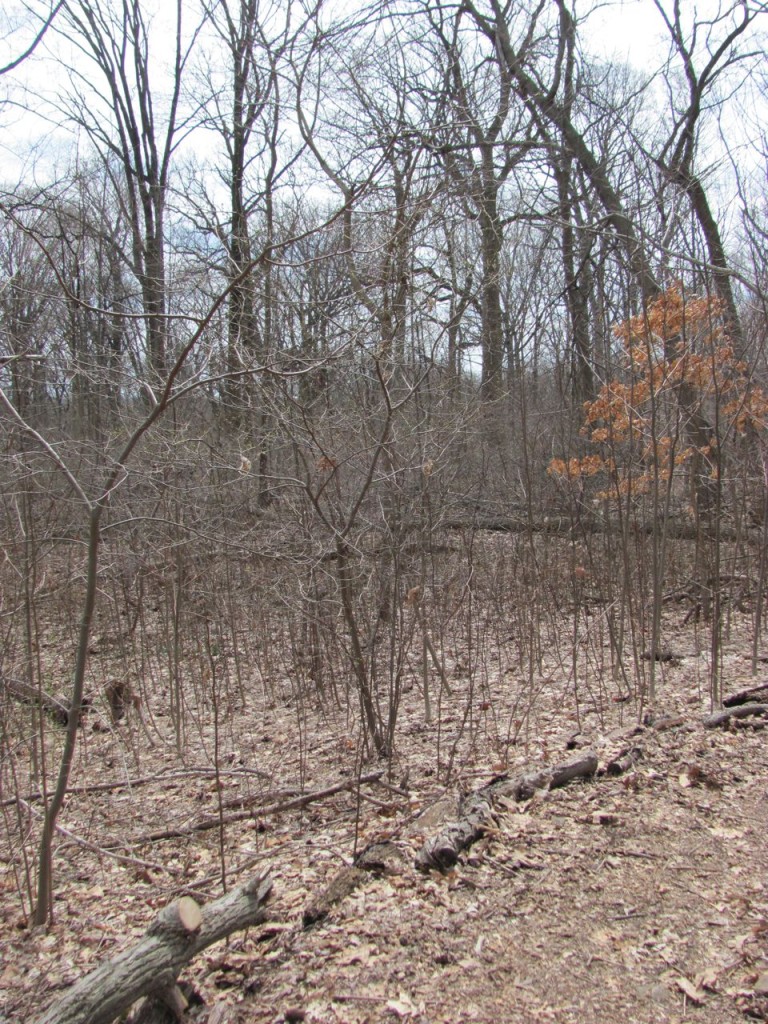
This is the site where there is Bloodroot blooming today, which was once dominated by exotic vegetation introduced mostly in the past 150 years. Â Now there is an early successional growth of Tulip Poplar and Sassafras, as well as saplings of Oak and Dogwood growing on this site. Mayapple is also beginning to establish itself. Invasives such as Tree-of Heaven , Garlic Mustard, Japanese Angelica Tree, and Japanese Honeysuckle are increasingly less frequent where they were previously quite prevalent. We remove the invasives on a regular basis and allow the native plants to grow.
This site has become less and less maintenance as the years go by.
We have a wait -and -see approach as to how this re-forestation effort will turn out.
Seeing the Bloodroot bloom this year for the first time since tossing those seeds in is a landmark moment for the restoration of this site.
On a philosophical note, our own intervention upon this ecosystem is not lost on us; on one side we just want to see and appreciate this natural beauty as it is in the world, as if we were initially unattached and we were uniting with this beauty and finding within it something that can inform and guide us-(perhaps a myth in our search for finding  philosophical and spiritual direction in nature)-but there is something to this, being that we encounter areas of the world we have never encountered and may never again, ones that may inform us in our worldviews; but here in Morris Park specifically, is a situation where we have willfully intervened in the natural world before us, one just outside the house in the City Park, in what we initially perceived as an overgrown area, one that seemed out of place and disturbed.
From our outreach and researches and discussions and conversations as well as our observations, we made the decision to remove the species of plants aforementioned, with the anticipation that there was a whole new set of species ready to grow there if the conditions were right, and we decided to make that decision and take that risk and we started with a very small area as a test and today, this balmy, sunny Spring day, the Bloodroot blooming on the site, we are seeing more of the results of these decisions.
At once we are disconnected from the feeling of interacting with a ‘raw’ nature that can inform us impartially on a philosophical level and we are now wholly responsible and ‘involved’ with nature on this specific site, so it is no longer wild to us in that regard. Wild without quotes because wild has become something of a societal obsession as we try to find our place in the world among species. We have made the plunge to become completely un-wild by altering a place in the world we have no history with and yet somewhat ‘wild’ by interacting with this place so thoughtfully, with such a sense of speciation and human and plant history in mind.
As humanity grapples with wilderness, at once romanticizing it and destroying it, we choose the fun and enlightening path, which is to romanticize, of course, and that is where the answers can begin to be addressed, and we turn to science for that, again, of course, because all practical and philosophical matters look to science to keep on track. And Science, with its tested and tested again and again and scrutinized again and again is what ultimately informs our philosophy, the testing is like a conscious form of evolution, it guides and informs us, it is wild in that way.
It has been a wild, natural ride, taking the plunge and removing plants from the park, our yards and watching new ones grow, collecting and tossing seeds from time to time, proceeding slowly and cautiously all the while.
The trade off to this work, this decision, is that what we see in this specific area of Morris Park is not a truly ‘wild’ place, one which we have had no prior connection with and one we can appreciate as an outsider viewing the area as a natural place regardless of its history, influenced by humans to varying degrees. Instead what we see is a place that we have intervened with, one of which is no longer wild in this sense. It is an adventure, having made the plunge, these waters we have jumped into where we are so involved with the natural world, we as a species have altered it so much and now we as individuals and communities are compelled to interact with it on much more intensive levels than we feel comfortable with, we debate about wild vs not wild, who are we and what do we do?
For now, lets just enjoy the beautiful flowers and enjoy the warm sun on this balmy early Spring afternoon.
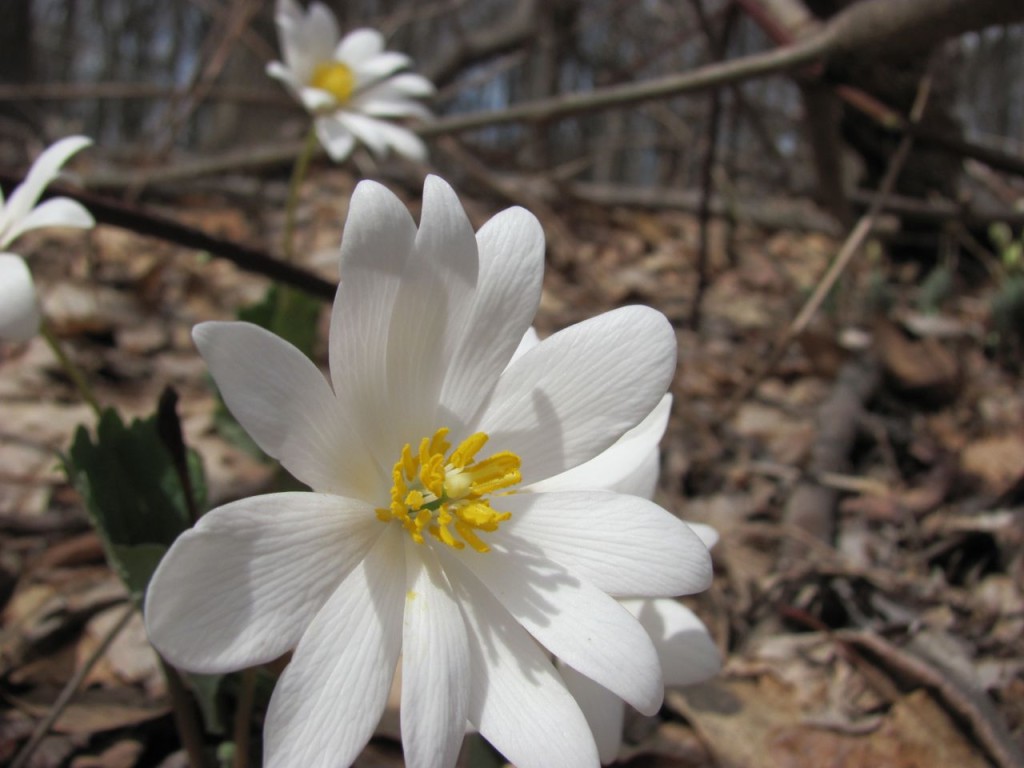
We love to stroll up the path and enjoy the flowers!
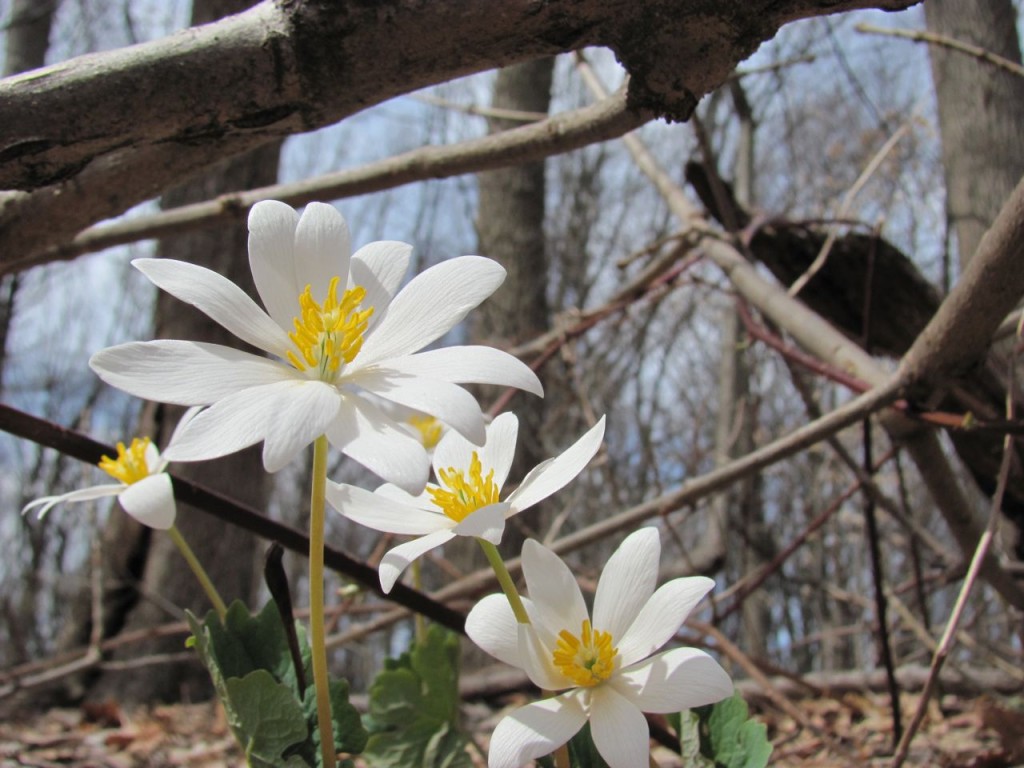
While the Bloodroot is a very glamorous early Spring native bloomer, we must also notice the blooming Spicebush!
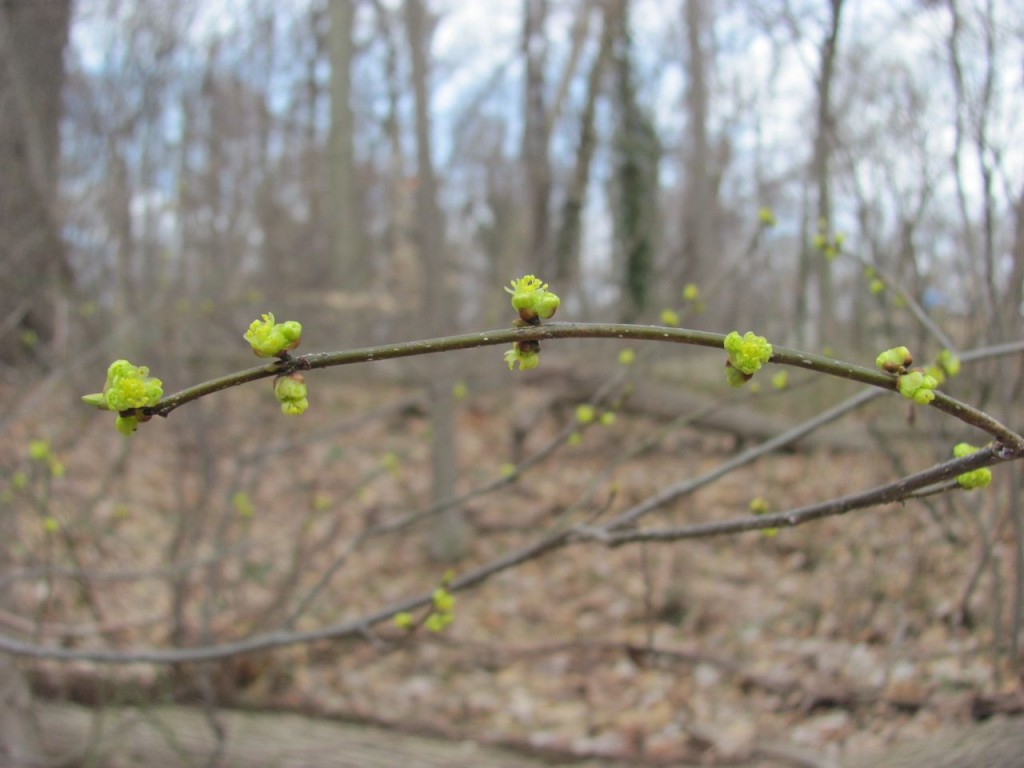
Not to be missed!
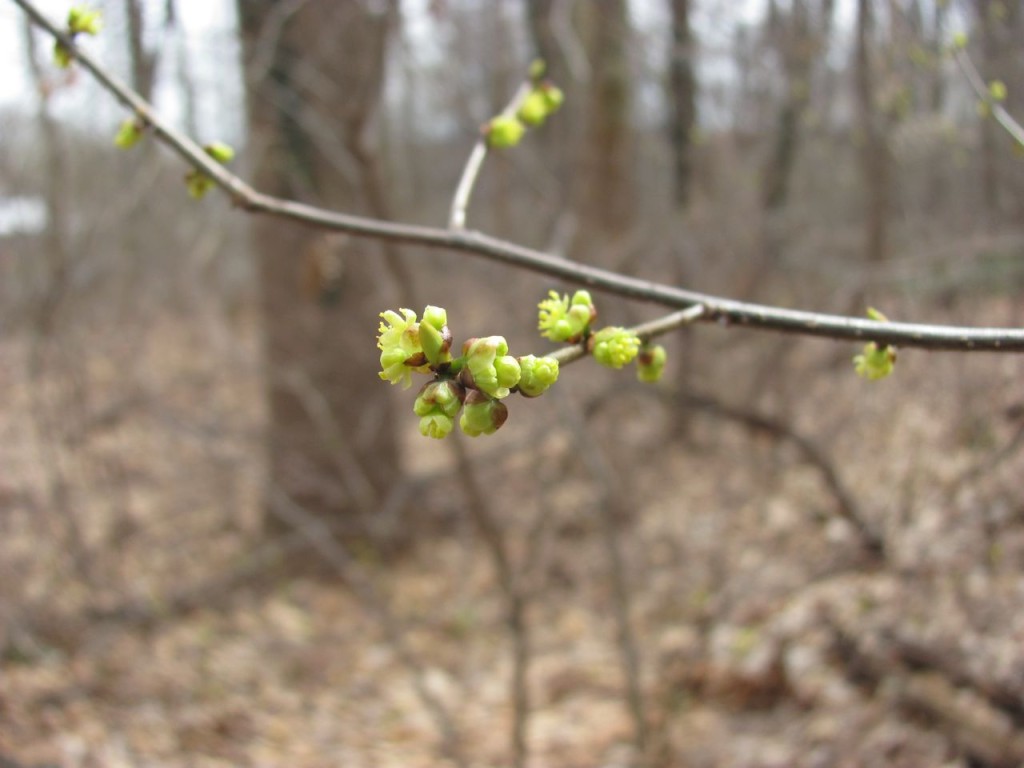



I got lost- before I read your post I thought maybe it was another Pennypack park. So I will be there tomorrow now that I know it is off of City Line Ave. Thanks so much!
Is the trail off city line ave?
There is a trail off of City line ave at 66th street, but there is a bridge out. The best trail to see the blooming bloodroot is the one that starts at the dead end of Morris Park road, which is just off 66th street, south of city line ave about 8 blocks. There is on street parking near the trail head.
http://www.thesanguineroot.com/?page_id=2688. Kathy I added a crude picture of a trail map for you. There us a pdf version somewhere.. I will update this trail map page later. Let us know if you found your way!
I am on my way to morris park! It is near 71 st street correct? I am from bucks county, pa.
Kathy, there is a trailhead at 66th and Sherwood. You can park along the street. The bloodroot is up by Morris Park Road and Woodcrest ave trails, mostly Morris Park Road Trail. Hope you enjoy your Visit!
nice to see those invasives replaced!